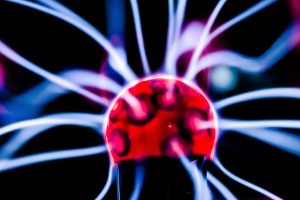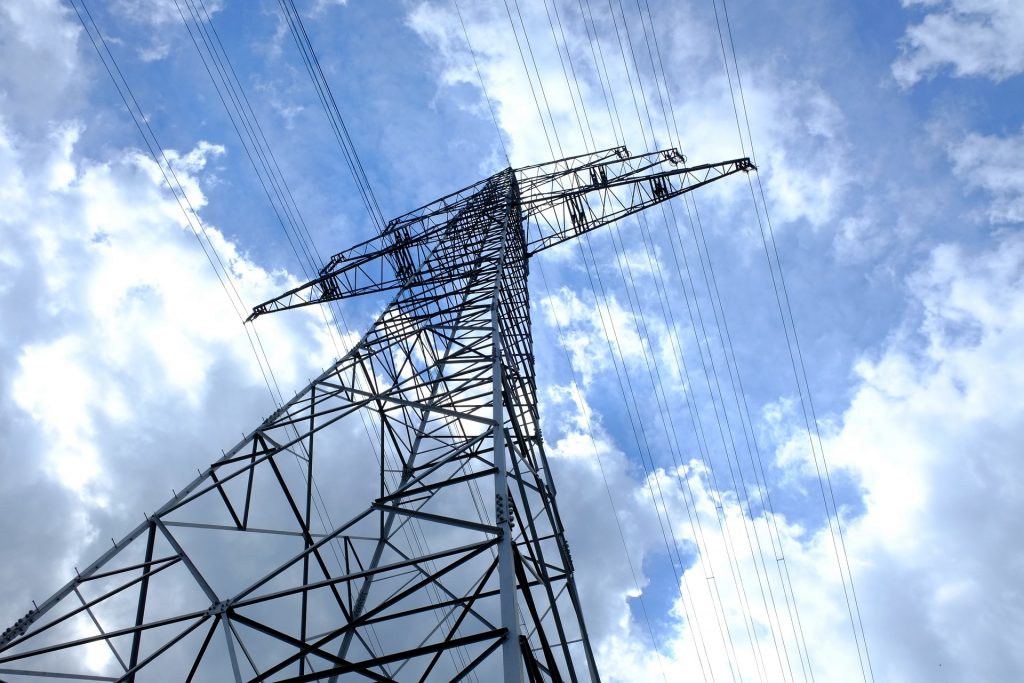Electricity. It’s so commonplace that we often take it for granted. (Until there’s a power failure, that is!)
It’s hard to imagine a time when someone couldn’t simply plug a cord into the wall and power up whatever device or appliance they needed. But there was a time, not so long ago, when even the most advanced parts of the world couldn’t even imagine the wonders that awaited them in the electric age.

Background
The story of electricity begins in the 17th century, when a fascinating German named Otto von Guericke first documented static electricity, without actually knowing exactly what it was he was experimenting with in his lab.
By the late 18th century, scientists like Alessandro Volta and André-Marie Ampère, advancing the discoveries of previous experimenters, had made significant strides in understanding electricity and magnetism. Volta’s invention of the first effective battery marked the advent of reliable and sustained electrical currents, while Ampère’s formulation of the principles of electromagnetism laid the foundation for subsequent breakthroughs.
While there have been numerous milestones through the years that have shaped our electrified world of today, a case can be made that one moment stands out as the most pivotal – the discovery of electromagnetic induction by Michael Faraday in the early 19th century.
In 1831, Michael Faraday conducted a series of experiments that would alter the course of history. His pivotal discovery revolved around the phenomenon of electromagnetic induction. Through meticulous experimentation, Faraday demonstrated that a changing magnetic field could induce an electric current in a nearby conductor. This revelation not only confirmed the interrelation between electricity and magnetism but also laid the groundwork for the development of electric generators—the heart of our modern power systems.
Faraday’s discovery paved the way for practical applications of electricity on an unprecedented scale. Electric power generation became feasible, leading to the construction of the first electric generators in the mid-19th century. The ability to convert mechanical energy into electrical energy revolutionized industries, transportation, and daily life.
Faraday’s principles inspired inventors like Hippolyte Pixii, who created the first practical dynamo in 1832. This device marked the birth of commercial electrical power generators. Subsequent innovations, such as Siemens‘ dynamo-electric machine and Thomas Edison‘s development of direct current (DC) systems, contributed to the rapid expansion of electric power distribution.
While Edison’s DC systems proliferated, the true transformation of the electrical landscape came with the introduction of alternating current (AC). Nikola Tesla, drawing upon Faraday’s principles, developed the alternating current generator in the late 19th century. This innovation, coupled with George Westinghouse‘s vision, led to the widespread adoption of AC power distribution, overcoming the limitations of DC systems and enabling electricity to be transmitted over longer distances. Tesla’s ideas provided us with the massive power grid that efficiently supplies us with the numerous benefits of our modern, electrified life.

Generation
While electricity can seem pretty simple for us as the end user (we plug a cord into the wall and start using our phone), the journey from its source to our home is a complex and fascinating process.
The story begins at a power station, where various energy sources such as coal, natural gas, nuclear, or renewable sources like wind or solar, are used to generate electricity. Using one of these energy sources to power some type of alternating current generator, electricity is produced. Once it’s been produced, it undergoes transformation to increase its voltage for efficient transmission. In fact, alternating current’s ability to easily transform voltage levels, increasing and decreasing as required, allows for efficient transmission and distribution of electricity across vast networks, reducing energy losses in the process and making it the preferred choice for long-distance power transmission.
Once the voltage has been increased by a transformer, the next step involves the electricity traveling through high-voltage transmission lines, often covering long distances. These power lines form an extensive network that crisscrosses regions and countries, connecting power stations to local substations. Transformers at these substations adjust the voltage again, preparing the electricity for distribution.
From the substations, electricity travels through lower-voltage distribution lines, navigating through neighborhoods and cities. Eventually, it reaches a distribution transformer near our homes, further reducing the voltage for safe usage in our homes and businesses. These transformers are typically located on a utility pole or in a ground-level enclosure.
Finally, the electricity enters our home through the service drop, a power line connecting the distribution transformer to our residence. Once inside, the electrical panel regulates and distributes the power to various circuits throughout the home. From there, the electricity powers our lights, appliances, electronic devices, and more, completing an intricate process that ensures a reliable and efficient delivery of electricity from its origin to the comfort of our home, supporting our modern lifestyle.
If you have access to Prime Video, there’s a wonderful 3-part series called Shock and Awe: The Story of Electricity, that details the history of electricity, from its inception to our modern world. Each episode is an hour long and well worth watching.
Would you like to get an email every Friday where we share the newest things we’ve discovered about home inspections? CLICK HERE to sign up.
Want to be an Influencer in Your Field? Share This Post!
Thanks, Joe

